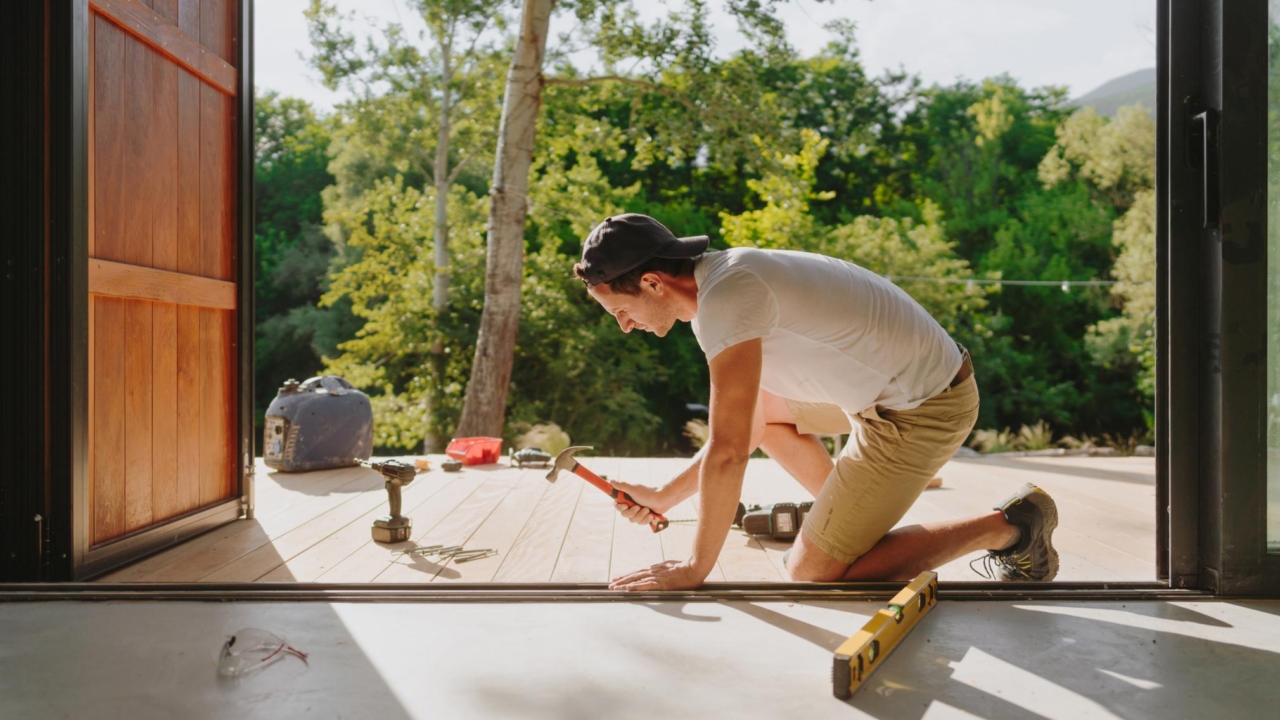How to Buy a Retro-Futuristic Home
Top tips for getting your own slice of space age-inspired living.
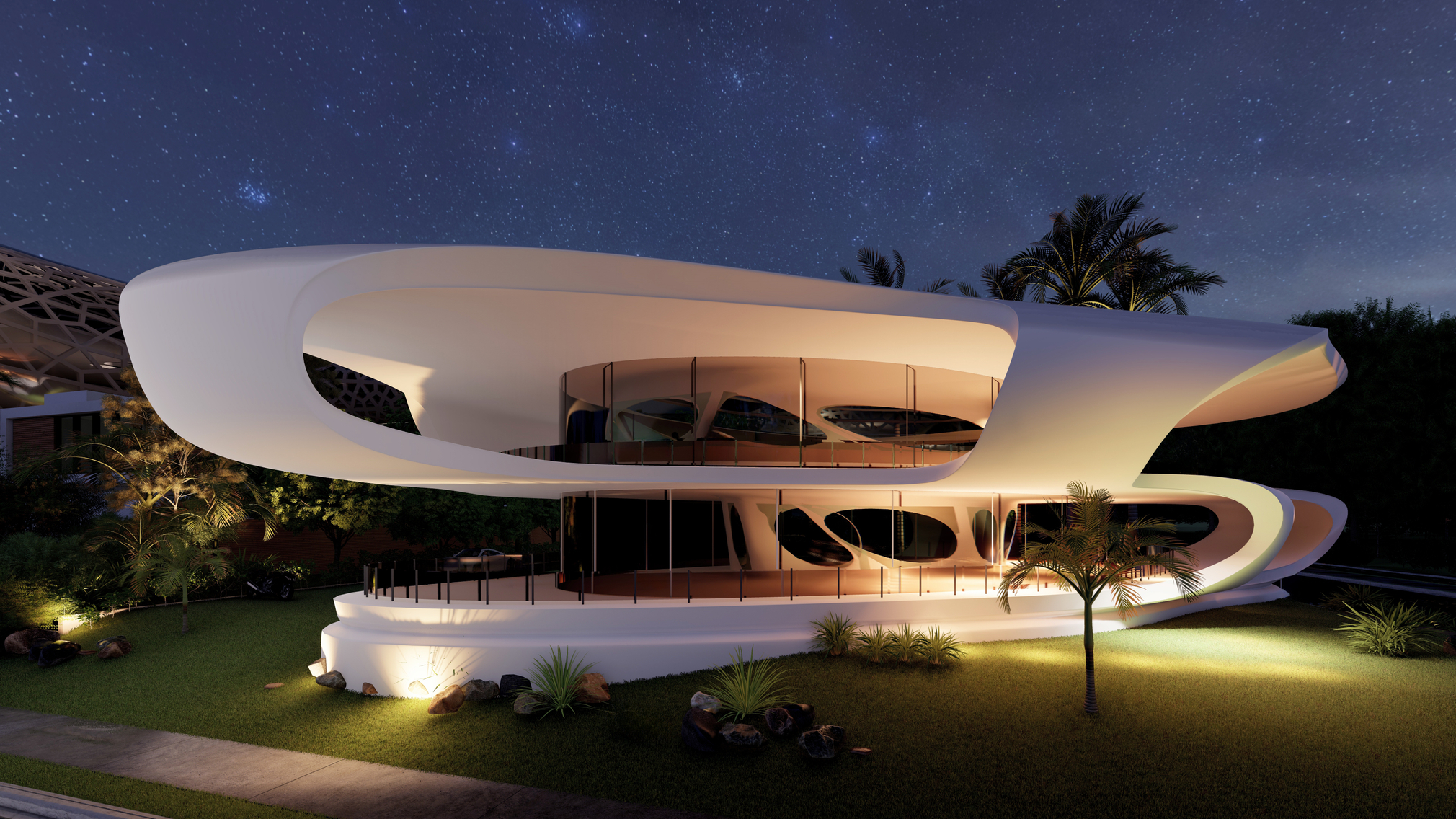

Written by May Ortega on July 14, 2025
If The Baxter Building from Marvel Studios’ “The Fantastic Four: First Steps,” in theaters July 25, is on your home shopping “inspo” list, then you’re no doubt a fan of retro-futurism. Also called “space age”, these types of houses look like they have been built in the 1960s by an architect straight out of the 2060s.
We’ll explore the far-out features that make retro-futuristic homes so iconic, and how to find — or create — a dwelling fit for the robotic fridges and flying cars of your dreams.
What is a retro-futuristic home?
A retro-futuristic home combines the aesthetics of the past with forward-looking concepts and technologies. It is characterized by sleek lines, bold geometric shapes, vibrant colors, and futuristic, curvilinear forms and materials. Builders of this style were inspired by mid-20th century visions of the future, fueled by the post-war atomic age, the dawn of space exploration and significant scientific advancements. These home types often create a sense of nostalgia for a future that never quite arrived.
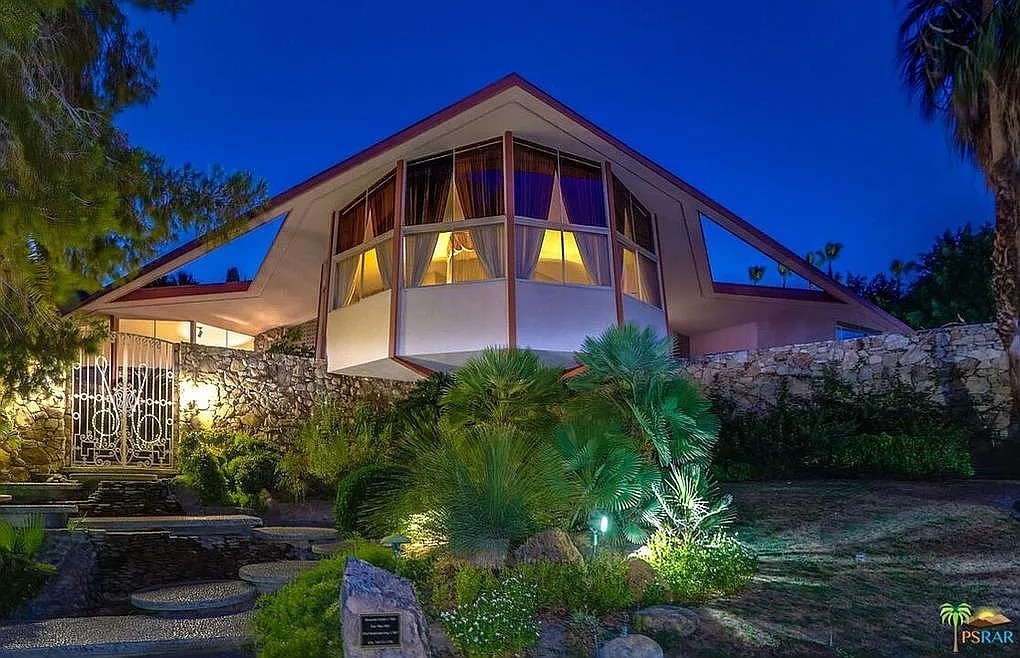
The home above, known as the “House of Tomorrow," is where Elvis and Priscilla Presley spent their honeymoon in Palm Springs, California. It's full of retro-futuristic architectural features, from its spaceship-like exterior to its curvy interior.
One of the most iconic retro-futuristic homes in the world is the Monsanto House of Tomorrow, which was designed by architects at the Massachusetts Institute of Technology, and put on display at Disneyland for 10 years. The plus-sign-shaped home was made entirely of plastic, and had expansive glass windows.
And then there’s the reimagined Baxter Building, home of the Fantastic Four from Marvel Studios’ new film, set in a retro-futuristic 1960s-inspired world. We’ve partnered up with Marvel to give you a tour of the home and see how these heroes live when they aren’t saving the world.
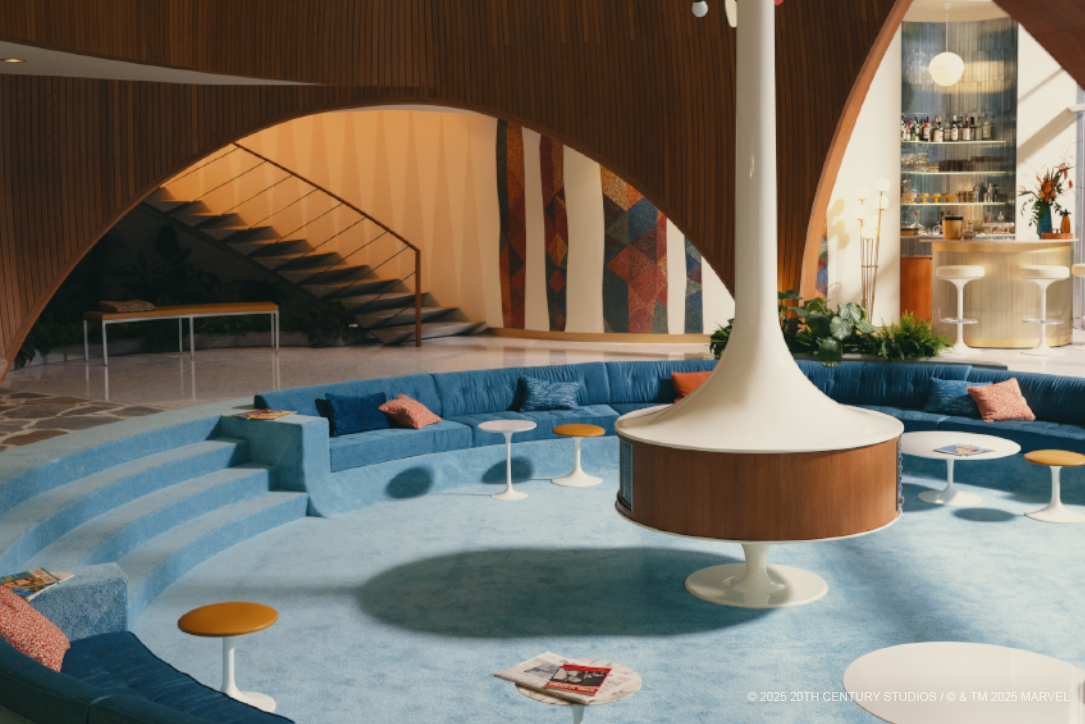
What makes a home retro-futuristic?
Shiny materials and geometric shapes
Think about any futuristic sci-fi movies you’ve watched. Sleek and shiny otherworldly settings are common backdrops. The same is true for a retro-futuristic home; chrome, stainless steel, glass, and even plastic are often used in unexpected ways to enhance the sleek bones of the home, giving it movement and dimension.
Open layouts and curvy architecture
One of the most notable aspects of a space-age home is its very unique architectural design. Geodesic domes, curved lines, and flowing forms often dominate the exterior and interior spaces — as opposed to sharp corners and peaked roofs. Think of buildings with curved, aerodynamic silhouettes (or conversely, straight lines can be used as well), expansive windows reminiscent of spaceship portholes. Then combine that with open floor plans that convey a sense of flow and motion.

Open floor plans didn’t gain popularity until the 1940s and ‘50s, when other mid-century modern features like huge windows and minimalism came into the mainstream. At the time, open floor plans — instead of segmented rooms — could be seen as a response to traditional architecture from decades past. And now, they’re a trademark of retro-futurism. The home above, known as the "Circular Sun House," is an example of this style.
Large windows and open layouts maximize natural light, thus enhancing the bright and airy feel of the home. Multi-level spaces and unique layout designs, such as split-levels or sunken living rooms, add an extra layer of dimension.
In the photo below, we step into the Circular Sun House's kitchen. It features a metallic countertop, sleek appliances, and semi-circle windows — three space-age features.
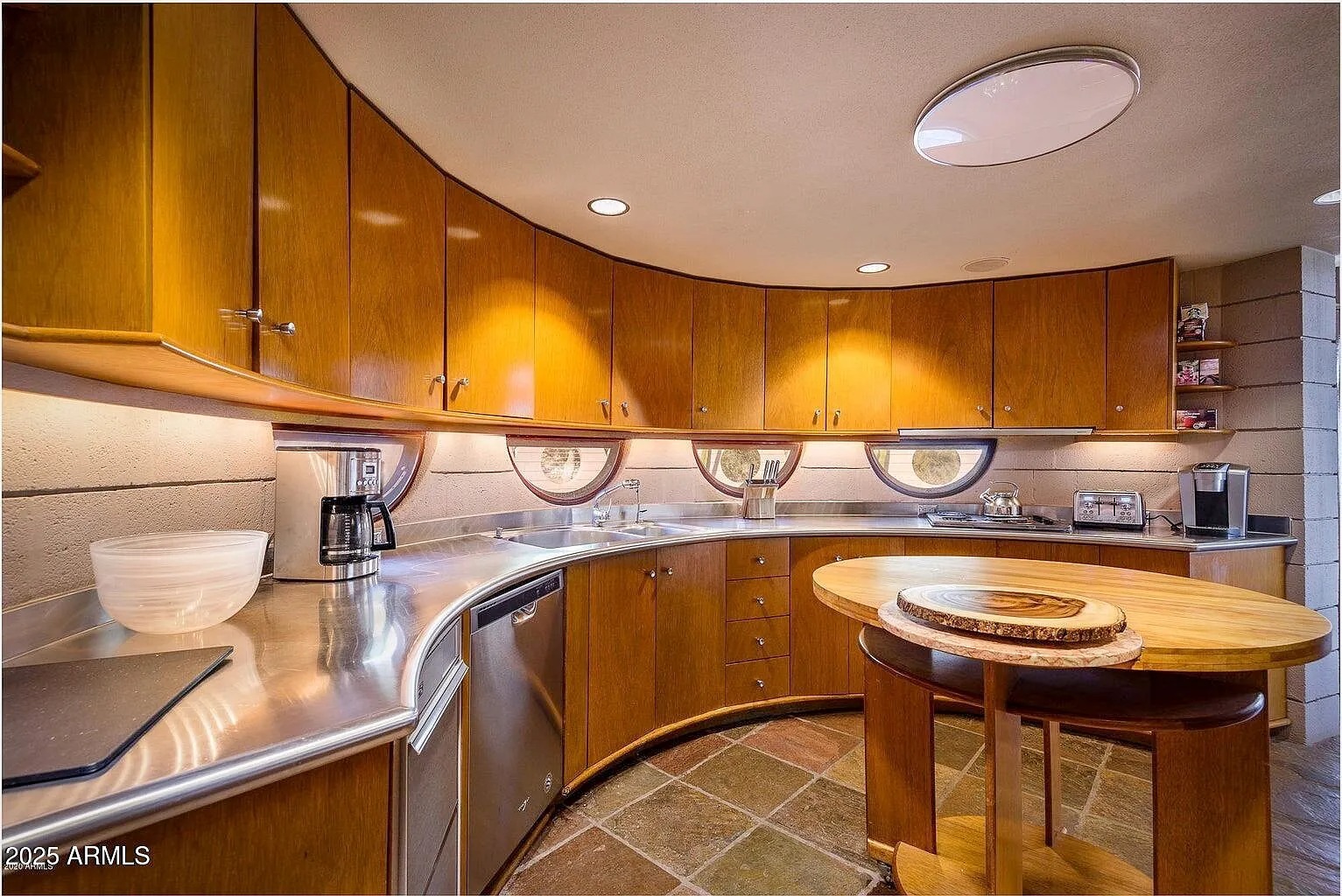
Smart home systems
Another defining aspect of a retro-futuristic home is the seamless integration of technology. In today’s home, this might look like smart home systems, which allow for the automation of lighting, heating, and security. They not only enhance the home’s functionality and safety, but they also align with the automated assistance that retro-futurism imagined in the 20th century — think HAL 9000, the AI embodiment of the spaceship in “2001: A Space Odyssey.” Except your home tech won’t turn on you (probably).
How to find a retro-futuristic home
Work with a real estate agent
Hiring an expert real estate agent can make all the difference in finding a space-age gem. Vet any agent you want to work with to verify that they can help you find retro-futuristic properties; for example, ask if they’re familiar with mid-century modern homes, some of the iconic architects of this style, or if they’re familiar with any specific features that these homes include. For example, if they saw the kitchen below, would they recognize its unique cutouts in the walls, or the use of sleek, minimal design in its architecture as retro-futuristic?
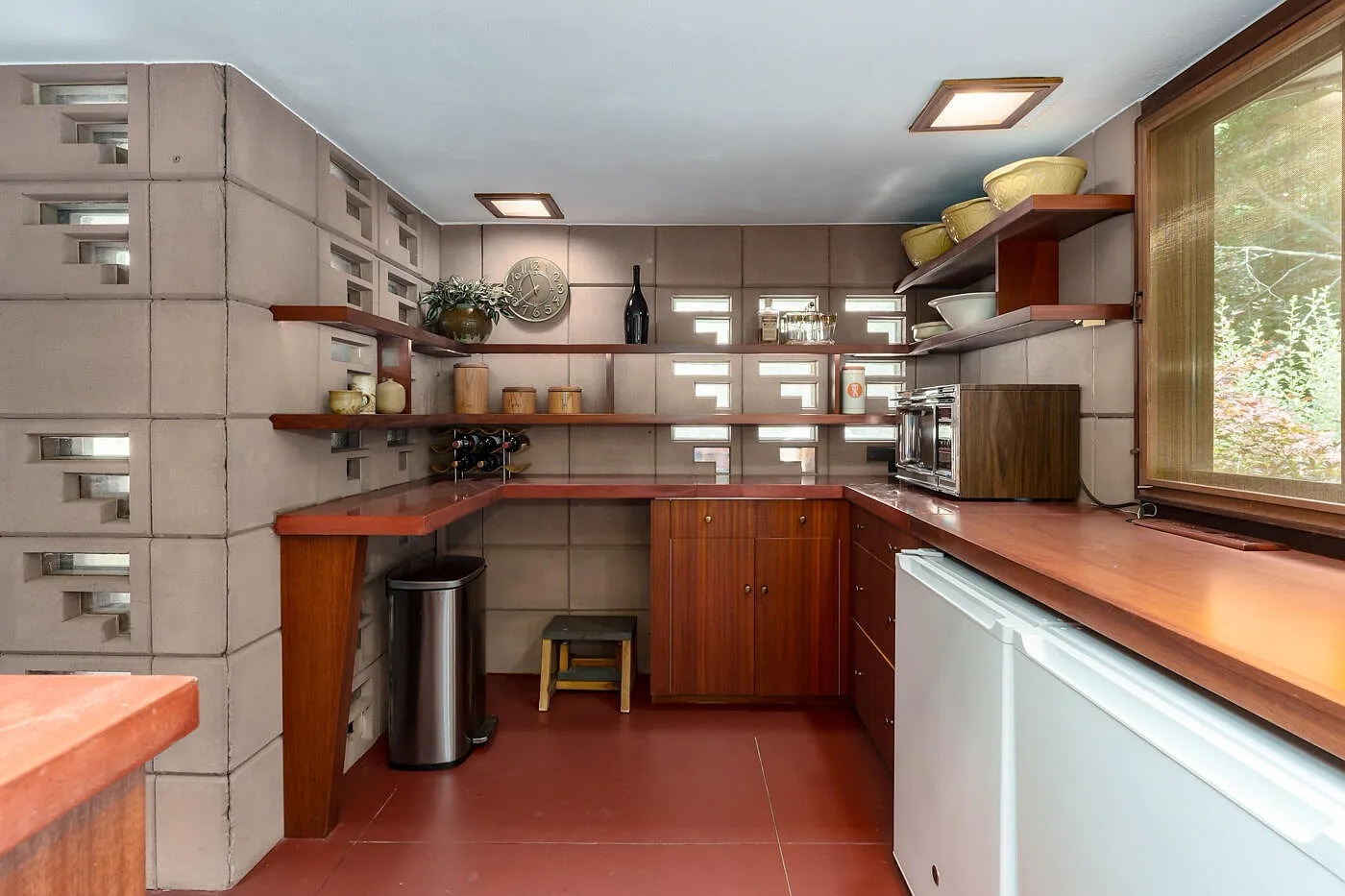
An agent who’s familiar with this type of architectural design can offer insights into the home’s original materials and how to care for it. You can use Zillow to connect with well-rated agents in your area.
And don’t forget that your agent can help you throughout the entire home-buying process, from shopping for a space-age house to closing the deal and making it yours.
Budget for updates and repairs
Older homes often come with the expectation that they will require some heavy repairs down the line. That could come in the form of updating the plumbing or electrical system, or having to install a new roof or flooring.
Retro-futuristic homes are typically built in the 1950s or ’60s, making them at least 60 years old. Keep an eye out for red flags as you’re touring any home, like signs of damage or pests.
Use the right keywords on Zillow
Keywords can really help you narrow your search on Zillow. You can use specific terms like “mid-century modern,” “futuristic design,” and “vintage sci-fi” to hone in on properties that may be the perfect embodiment of the retro-futuristic aesthetic.
The home pictured below can be found on Zillow when using the name of mid-century modern architect “Richard Neutra” as keywords. An apprentice of Neutra’s designed the house.
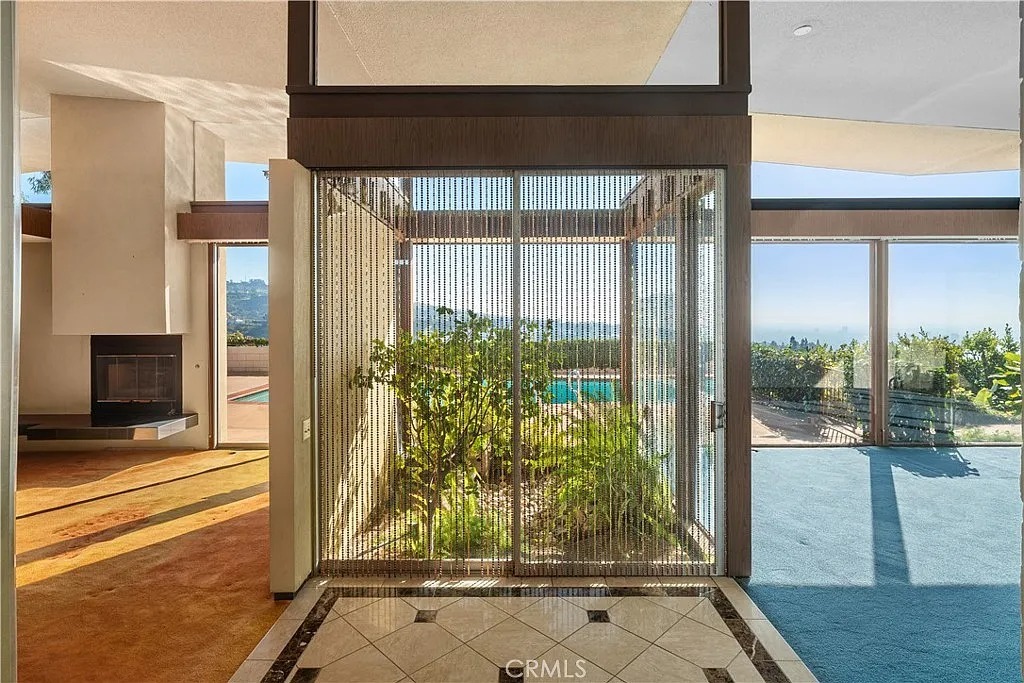
Another keyword to try is “geodesic”. These iconic structures, popularized by architect Buckminster Fuller, are perfect for someone who wants a unique and visually striking home.
Speaking of architects, using the names of famed retro-futuristic or mid-century modern architects like “Frank Lloyd Wright” as keywords is another way to find what you’re looking for.
Lastly, don’t overlook the term “atomic ranch.” This style combines the traditional charm of a ranch house with the futuristic elements of the atomic age. Atomic ranch homes often feature bold geometric shapes, bold colors, and innovative floor plans, making them a perfect fit for your search.
How to make your home retro-futuristic
If you’re dreaming of living in a retro-futuristic home, but buying a new house isn’t on your to-do list right now, you can bring the space-age vibes to you. The key to pulling this off is to mix modern and vintage elements — combining retro and futuristic decor.
Below you'll find the living room of a home designed by Architect Richard Holme, protegé of the influential modernist architect Richard Neutra. While this home looks to be of the future, it was built in 1967. What makes it fit into the retro-futuristic category to you?
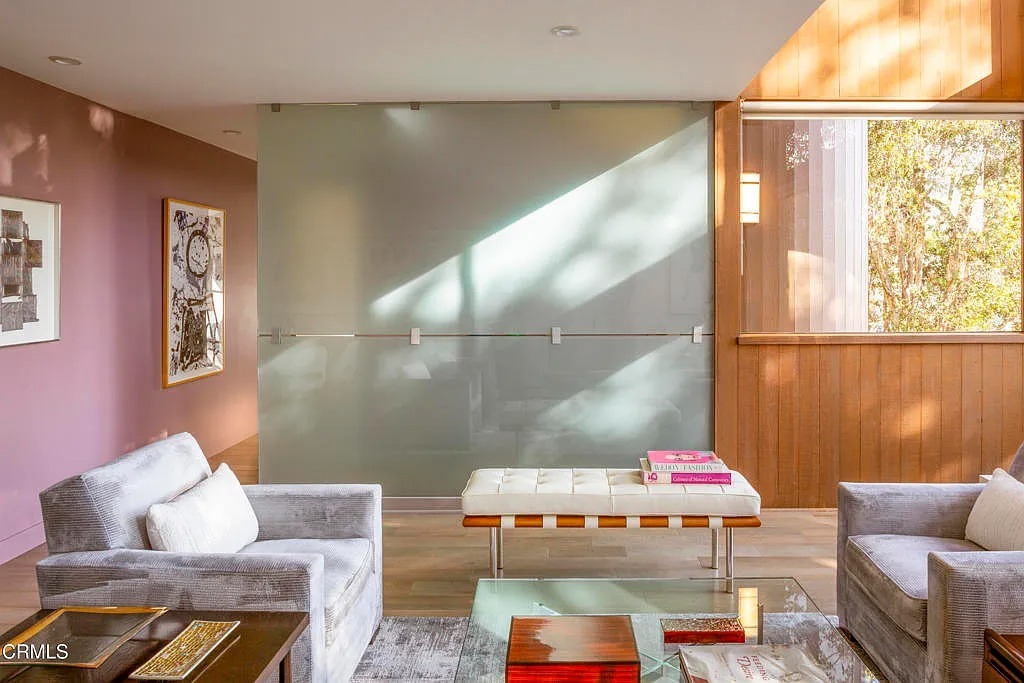
Decorate with sleek, shiny furniture
The furniture of your retro-futuristic space will likely serve as the anchor for the room. From Eames-style chairs to sleek, futuristic coffee tables, there are endless ways you can use furniture to really boost the vintage vibes you want.
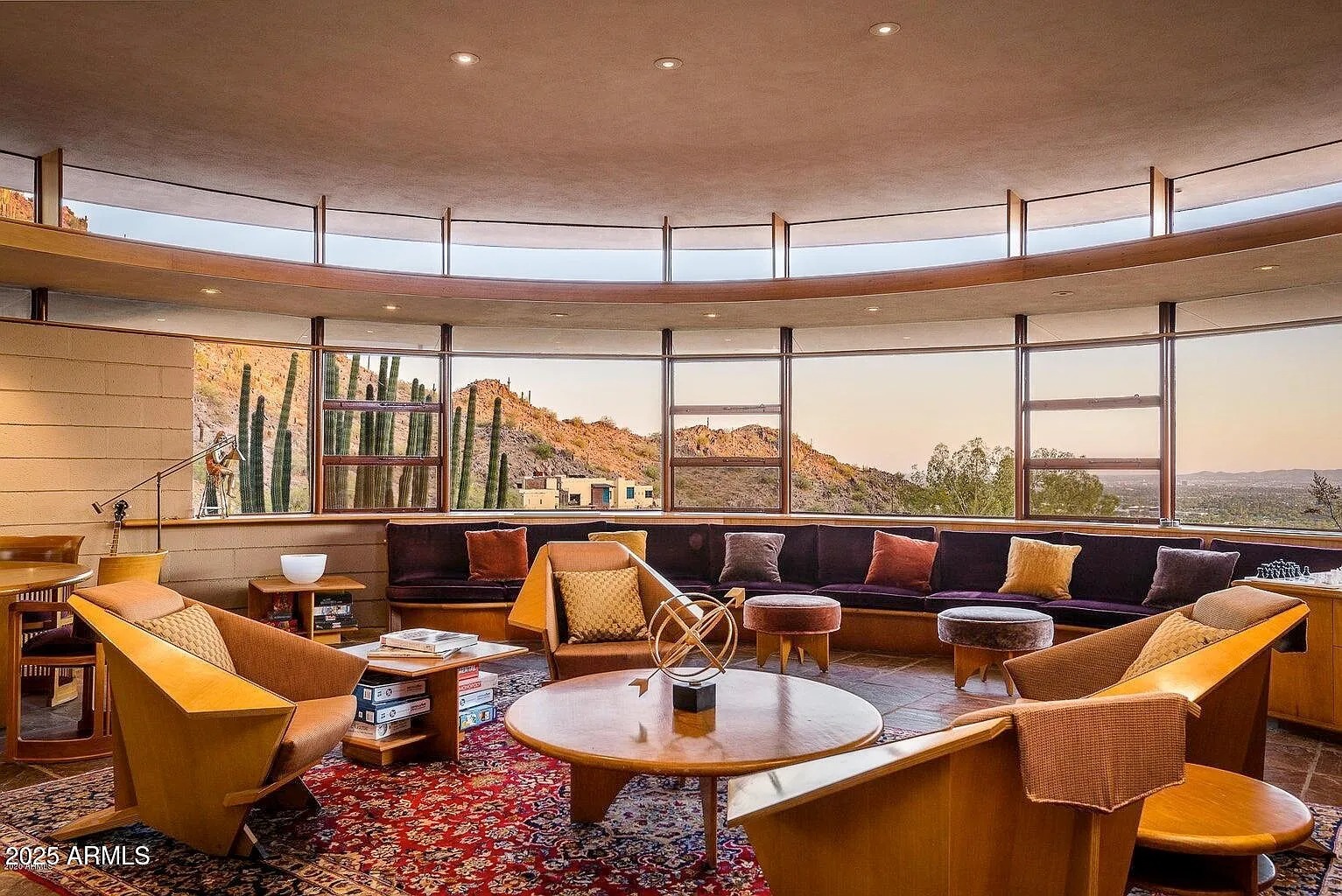
The living room inside the Circular Sun House includes an entire set of wooden tables — all mid-century modern. But some of the decor is more futuristic, like the gold sphere sitting atop the coffee table or the chairs with sharp angles in their designs.
You should aim to balance any sharp, shiny elements with ones that offer comfort and livability. Space-age homes should feel welcoming and functional, not cold and sterile. You can achieve this by integrating soft, organic materials with warm, neutral colors. For example, pairing chrome bar stools with an earth-toned rug can create a harmonious blend of futuristic and cozy elements. Or balance geometric angles with soft velvet accents like in the home above.
Style with vintage space art
The decor of a retro-futuristic home can include vintage space memorabilia, retro appliances, current technology, and futuristic art. Old NASA posters and sleek, minimalist sculptures can exist in the same space.
Artwork that features space exploration, futuristic cities, or abstract, geometric patterns can tie a place together. Accessories like starburst clocks, wall coverings with metallic finishes, and sculptures that mimic celestial bodies can be retro-futuristic as well.
The living room below includes a gold curtain and a globe-shaped lamp among its retro-futuristic touches.
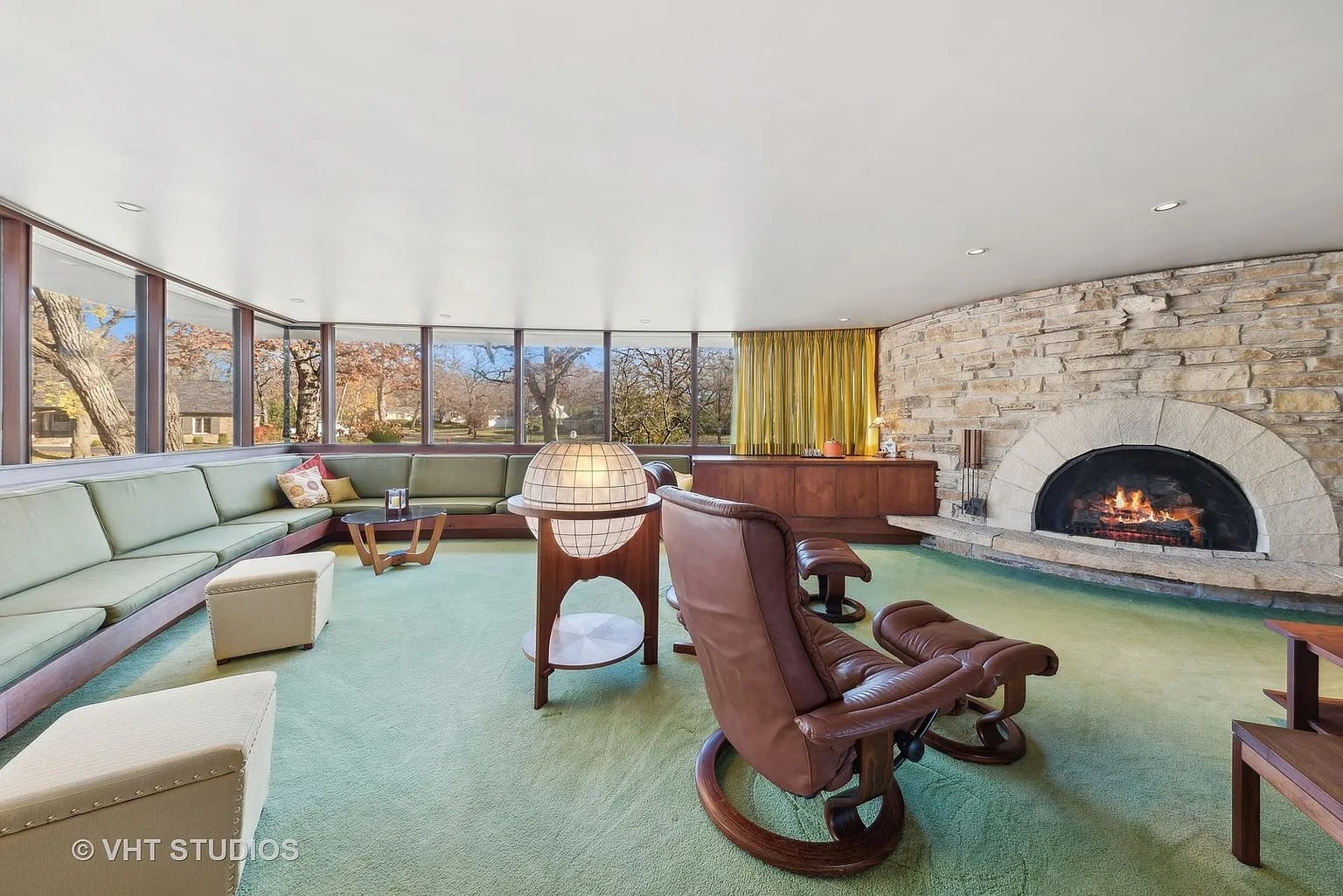
Create a mood with the right lighting
Lighting is also a key feature in a space-age home. Sleek, minimalist fixtures can help support that out-of-this-world atmosphere. Specifically, think of pendant lights, wall sconces with geometric patterns, and floor lamps with sculptural, abstract shapes. And for your tables, consider mushroom-shaped lamps, which were popular during the ‘70s and add the “retro” part to your retro-futuristic home. Neon can be another fun way to incorporate fun shapes and bold colors into your space. And the best part is that both types of lighting are pretty easy to find because of their modern-day popularity.
Search thrift stores
Vintage and thrifted decor can help bring your vision to life without the hefty price tag. Thrift stores and flea markets are goldmines for unique space-age furniture finds. They also come with a rich history and character that new, mass-produced decor items often lack. That’s not to say you can’t buy new pieces, just be thoughtful on whether those things will add to your retro-futuristic design.
Retro-futuristic homes uniquely blend old and new with sleek designs, bold patterns, and bright colors. Whether designing, buying, or dreaming, you can have a home that’s as functional as it is futuristic.
Tags
A local agent can help you stay competitive on a budget.
They’ll help you get an edge without stretching your finances.
Talk with a local agent